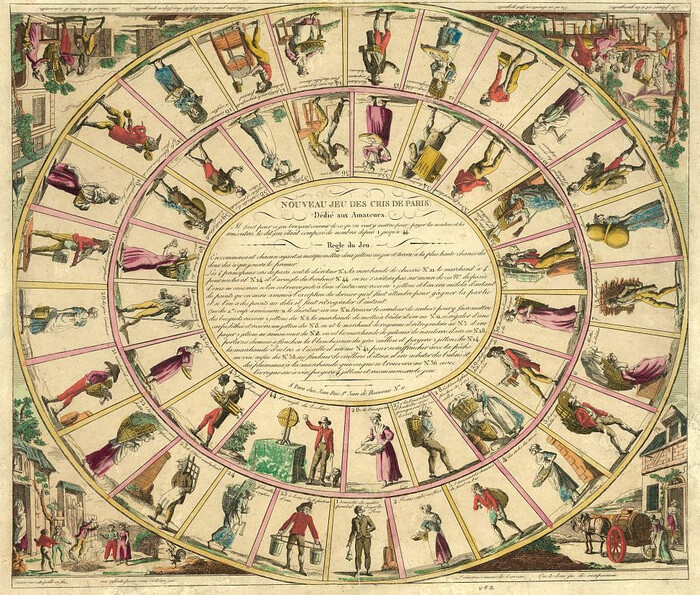Lifepaths in Tabletop RPGs
A lifepath system is a style of character creation in tabletop RPGs where instead of just rolling attributes and selecting skills and classes, you simulate the life of the character up to the point where the game begins.

A lifepath system in the 19th century, via the Library of Congress.
The word "lifepath" to refer to this system comes from the Cyberpunk 2020 series by R Talsorian Games, but the first popular system to use it was Traveller. Traveller's character generation was infamous for allowing a character to die before the game even began due to the dangers of their career (though a clearly-stated optional rule permitted changing death to simple injury).
Lifepath systems have a number of advantages over traditional RPG character generation - they allow characters to be created without understanding the whole system by making a lot of decisions for the player, they encourage variety in the party, and they put the player in unexpected roles. If all steps allow for random decision making they can also be useful NPC generation systems for the GM.
That said, lifepaths do have some downsides. They can take longer than traditional character generation, especially if they have a minigame element like Classic Traveller. With random childhood event tables, putting in unique events runs the danger of having multiple characters with the same "unique" backstory. If a system is designed and used properly these are avoidable, but it's something to keep in mind.
Besides RPGs using lifepath systems, there's also the Central Casting series, which is basically a lifepath system without an RPG. RPG Geek also has a category for lifepath games. Ψ